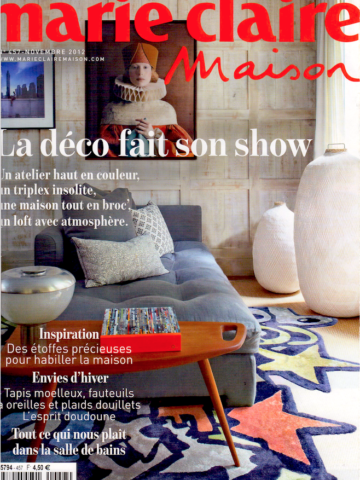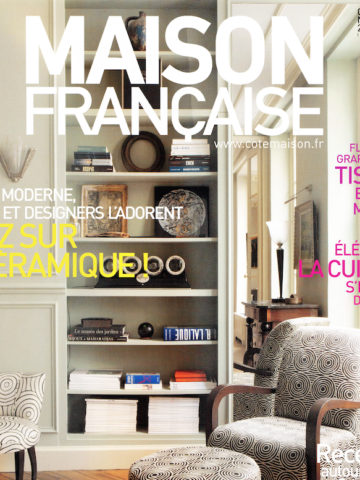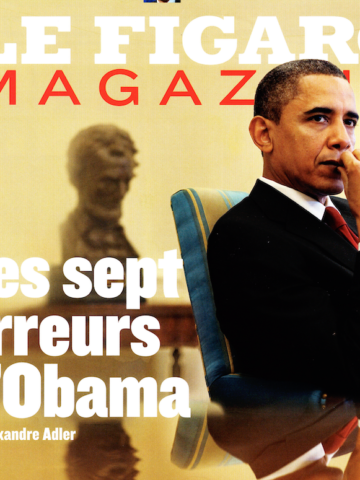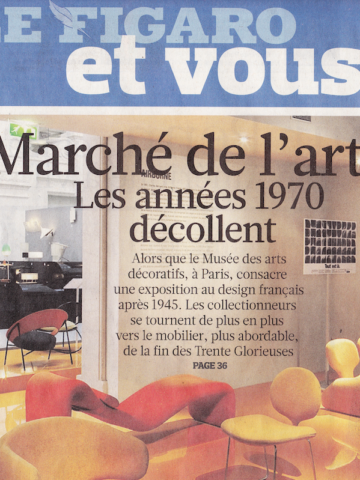Pierre Guariche
Light(ing) designer, 1950-1959
10/09/2012 - 27/10/2012
A spectacular exhibition entirely compound of the lamps of Pierre Guariche from the 50th, of which the majority are extremely rare.
We’re talking about an exceptional collection which is presented for the first time to the public. As a matter of fact its’ completeness is extremely rare in the domain of decorative arts (it needed seven years of research). The exhibition will present all of his lights, most of them have been created before 1954; after 1959 Pierre Guariche was preoccupied with a numerous of important interior designprojects and didn’t create any lamps anymore.
Presented will be 60 pieces of Pierre Guariche’s 36 models, including very rare variants made to order like the chrome wall light G1 which is blue lacquered or another one made of ivory and gun barrels!
Pierre Guariche: “He is one of the best designers of his generation”
Born in 1926, he graduated of the national school of decorative arts and died in 1995. He is one of the best designers of his generation, not just because of the large scale and the quality of his work, but as well because of the importance of the projects which were confided to him.
Pierre Guariche is one of the most important, if not the most important French light designer of the 50’s
He is a precursor because he invented the modern light / lampin France at the very beginning of the 50’s, at the same time as Jean Boris Lacroix, Serges Mouille, Robert Mathieu and Jacques Biny (who have been mostly publishers as well). His researches resulted in a multitude of realisations at many of the mainstream light manufacturers throughout the 50’s and 60’s. Due to their avant-garde nature his pieces were produced in very small series, which explains their rarity nowadays.
He produces a complete range : more than 35 different models have been produced, all to satisfy the total requirements of a modern apartment (the bedroom, the office, the reading chair, the living room, the dining table, the small spaces, often several functions are combined in the same light device etc.) Sixty years later they are in great demand because they are still modern, functional and aesthetic.
The functional and aesthetic creativity.
The most valuable characteristic of Pierre Guariche’s lamps is their quality of light. This generation of the first French designers places great demands on the practicality of their models, Pierre Guariche at their top: At first he decides on the desired kind of light, afterwards he invents the lamp which is going to produce this kind of light. The form, which should be inventive and beautiful, results from the function, which confers a richer aesthetic to it.
An example: the G1.
Guariche anticipated and accompanied the transformation of the living room and the dining room into one space with an integrated dining area.
The table, which has been traditionally enlightened by the central ceiling light and a pair of wall lights above the sideboard becomes a pull-out table in a corner of the living room. Pierre Guariche invents a lamp fixed on a movable arm, which can be spread out when the table is pulled out. The lamp has got two light bulbs: one of the reflectors sends the light towards the ceiling producing a pleasant atmosphere in the room, another bigger reflector enlightens the centre of the table and as well, with a slightly dimmed light, the dinner party. All details and dimensions result from the functional requirements: The form has been picked out according to the function, and that’s what is creating a coherence and an evidence which is still a lot appreciated nowadays. He was one of the first to design movable lamps, even with a double balancing pole as for example the floor lamp G23, as Calder was the first to design mobile sculptures.
The fruits of a collaboration with a publisher: Pierre Disderot.
The generation of Pierre Guariche, born between 1925 and 1930, is the first generation of graduates of the university of decorative arts, which is confronted with the problem of the edition.They don’t want to produce just unique objects for wealthy customers anymore, but they wish to reach a larger public with their qualities of manufacturing through the mass-production of their models. But there are no publishers in the domain of furniture or in the domain of lamps in France; that’s why they had to accompany the creation of this new job. Pierre Disderot is an archetype: Fascinated by the creation of new things and by lamps, he develops a friendly and as well a business relationship with these young designers (P. Guariche, A. Richard, M.Mortier…) and spends his time making prototypes in the studio. He designs the technical details and develops the majority of the pieces of special orders. This confers a grand sophistication on his metallic devices and shows his further development from an artisan of the 50’s to a designer of the manufacturing companies during the 60’s and 70’s.


































